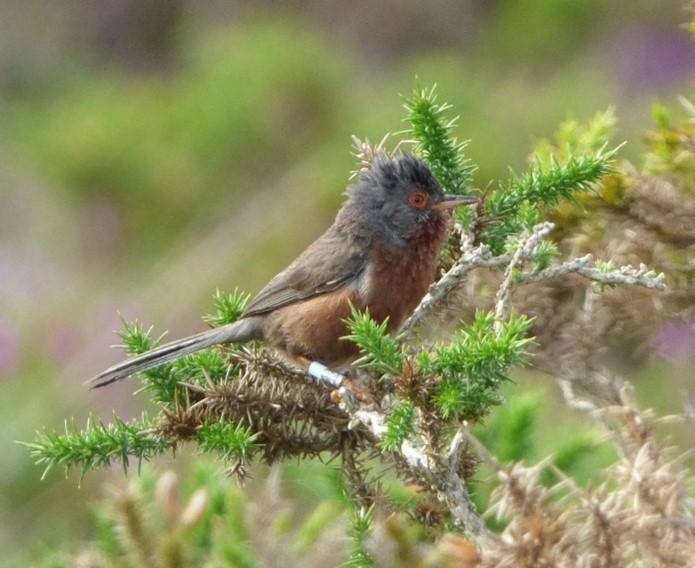
Dartford warblers can be seen all year round on the Pebblebeds, though are shy and elusive outside of the breeding season (March to September). At this, the northernmost extent of their range, the population is vulnerable to prolonged spells of cold weather.
They often share singing perches and territories with companion stonechat, both nesting close to the ground, deep in heather and gorse. The two can often be seen together, with stonechat more brazen than his shyer associate, perching on gorse tips above as ‘Darty’ dives beneath, safe under cover.
Dartford warblers are short lived birds, with typically lifespans of only a couple of years. They breed after the first year, producing on average, 2 broods of 4 eggs each breeding season (March-September). Eggs are incubated for 14 days, with juveniles fledging after another 14.
Nests are built in low scrub typical of the heathland landscape. This leaves them vulnerable to disturbance if we or our dogs stray from the paths. Stick to the main tracks to help these quirky little birds thrive.
Dartford warblers have a strict insectivorous diet; heather and gorse are great insect larders, full of tasty mites and spiders.
Their song is a scratchy mechanical sound, listen here for a tweet of the day.